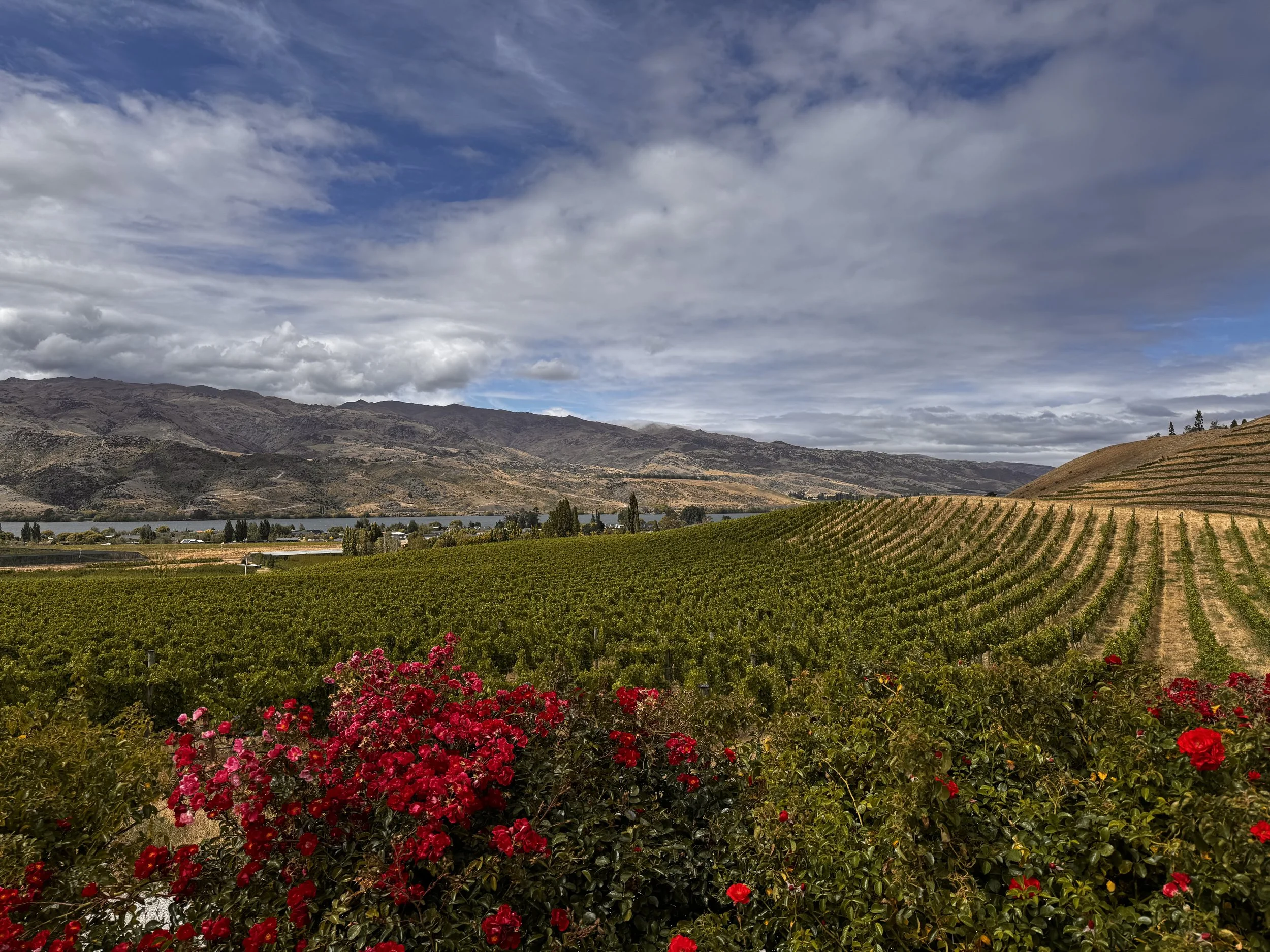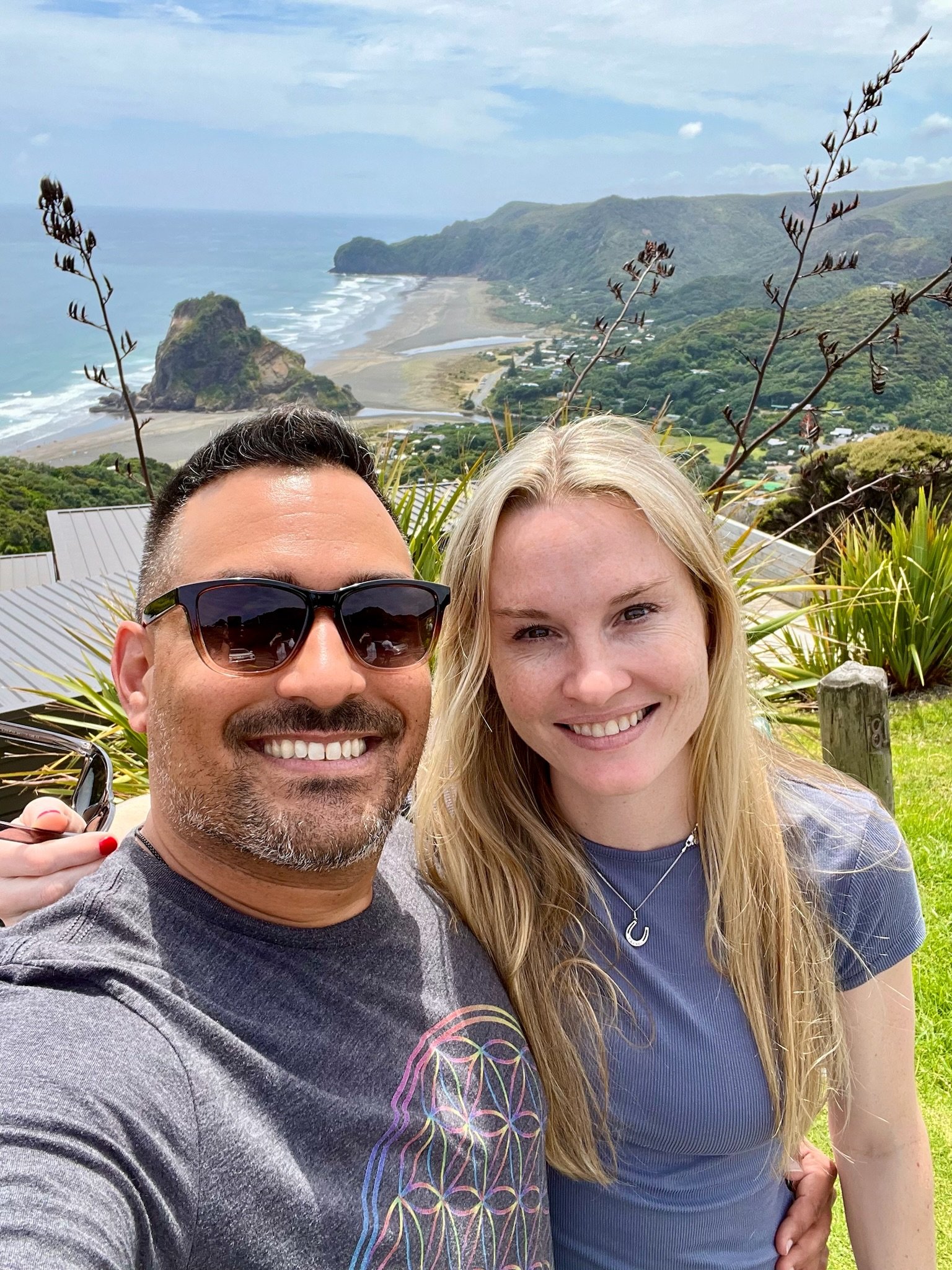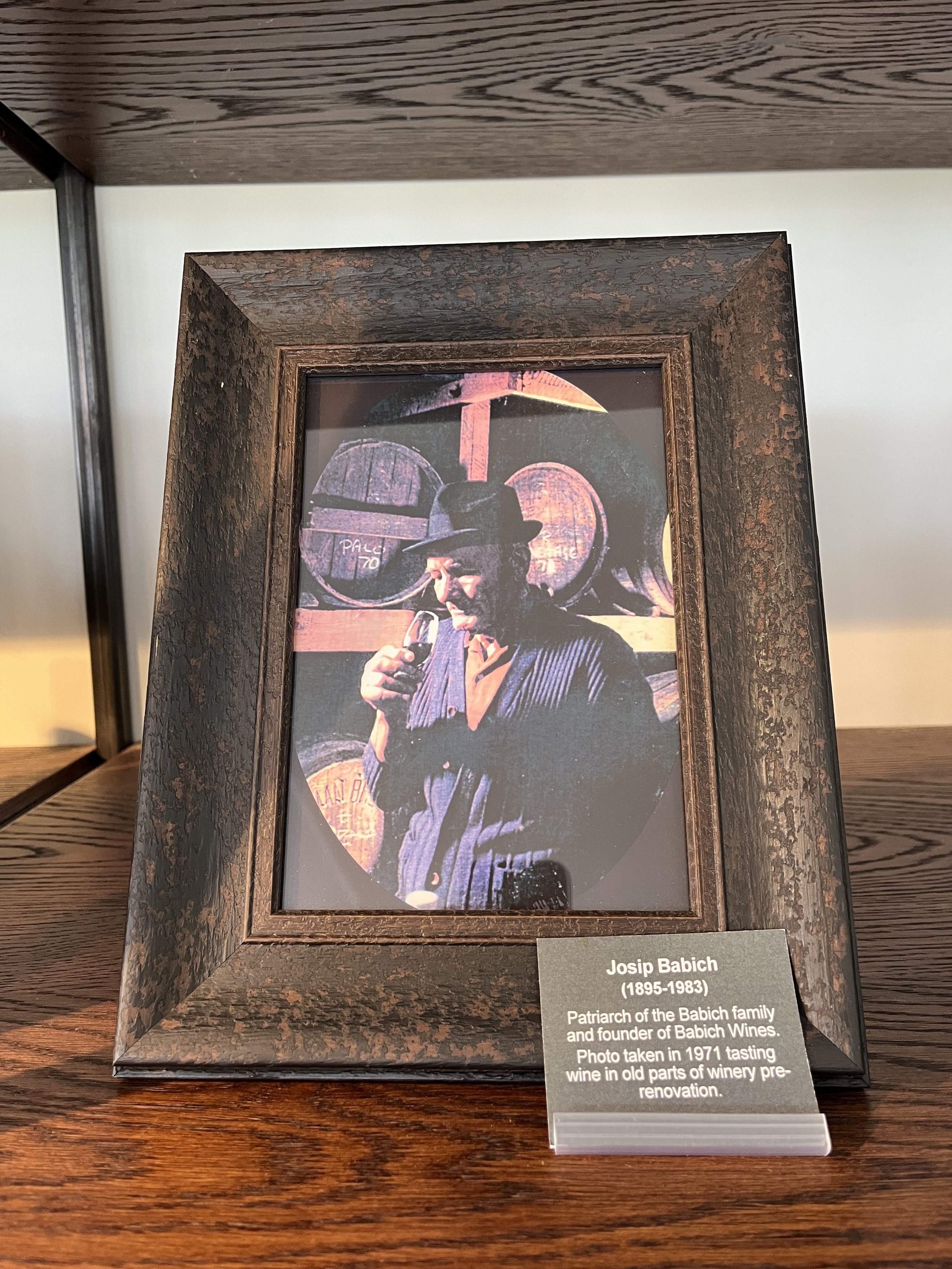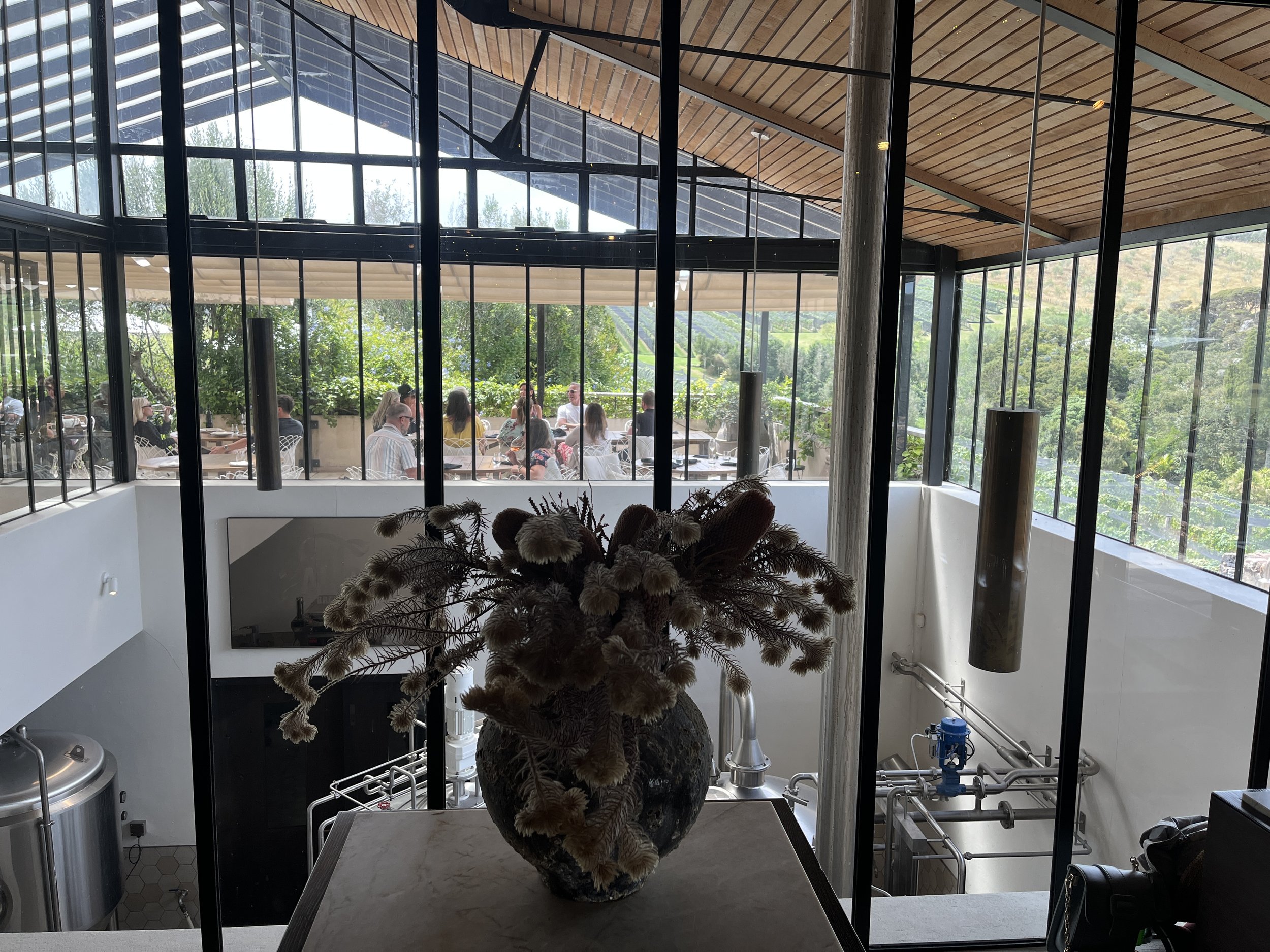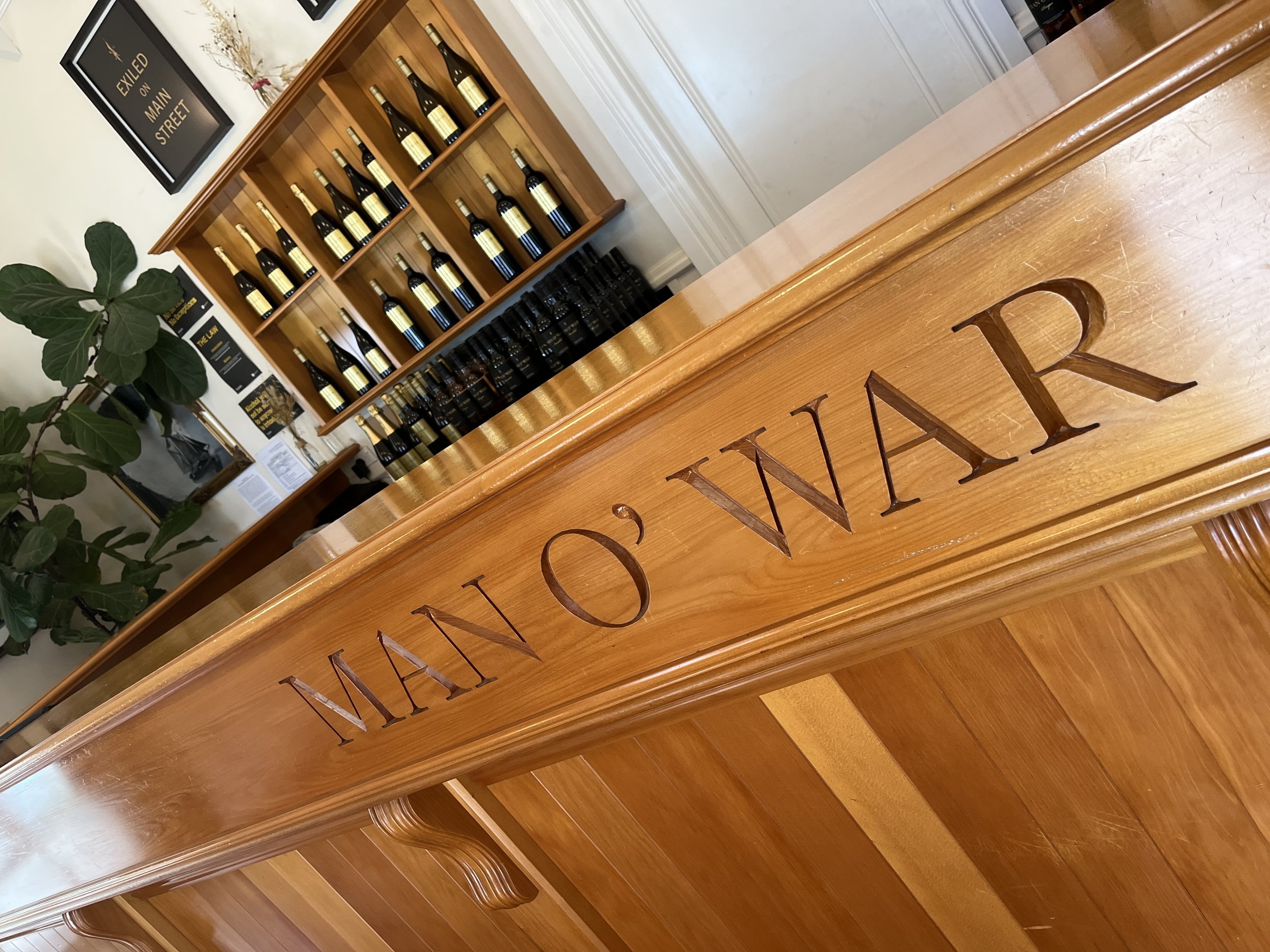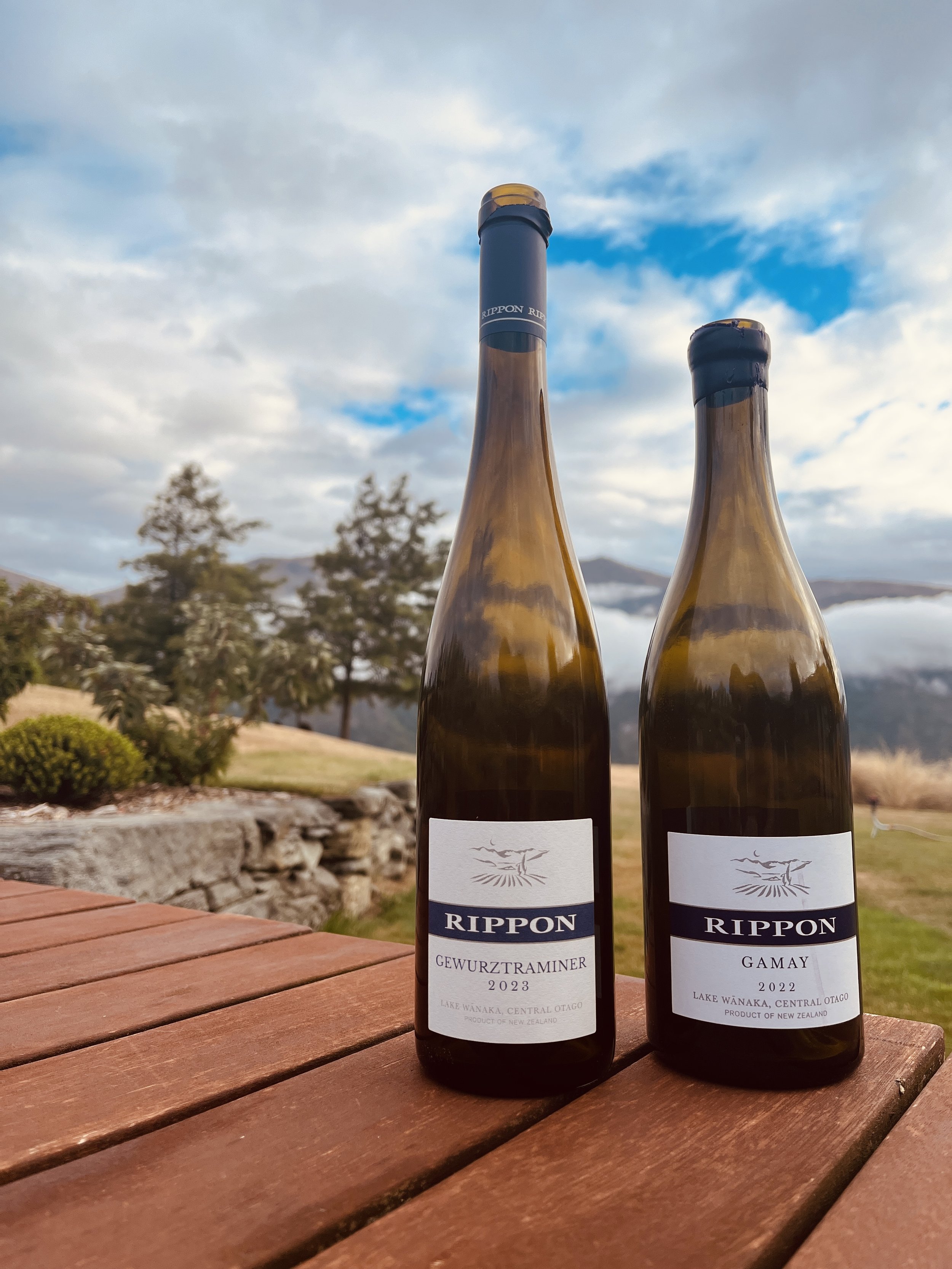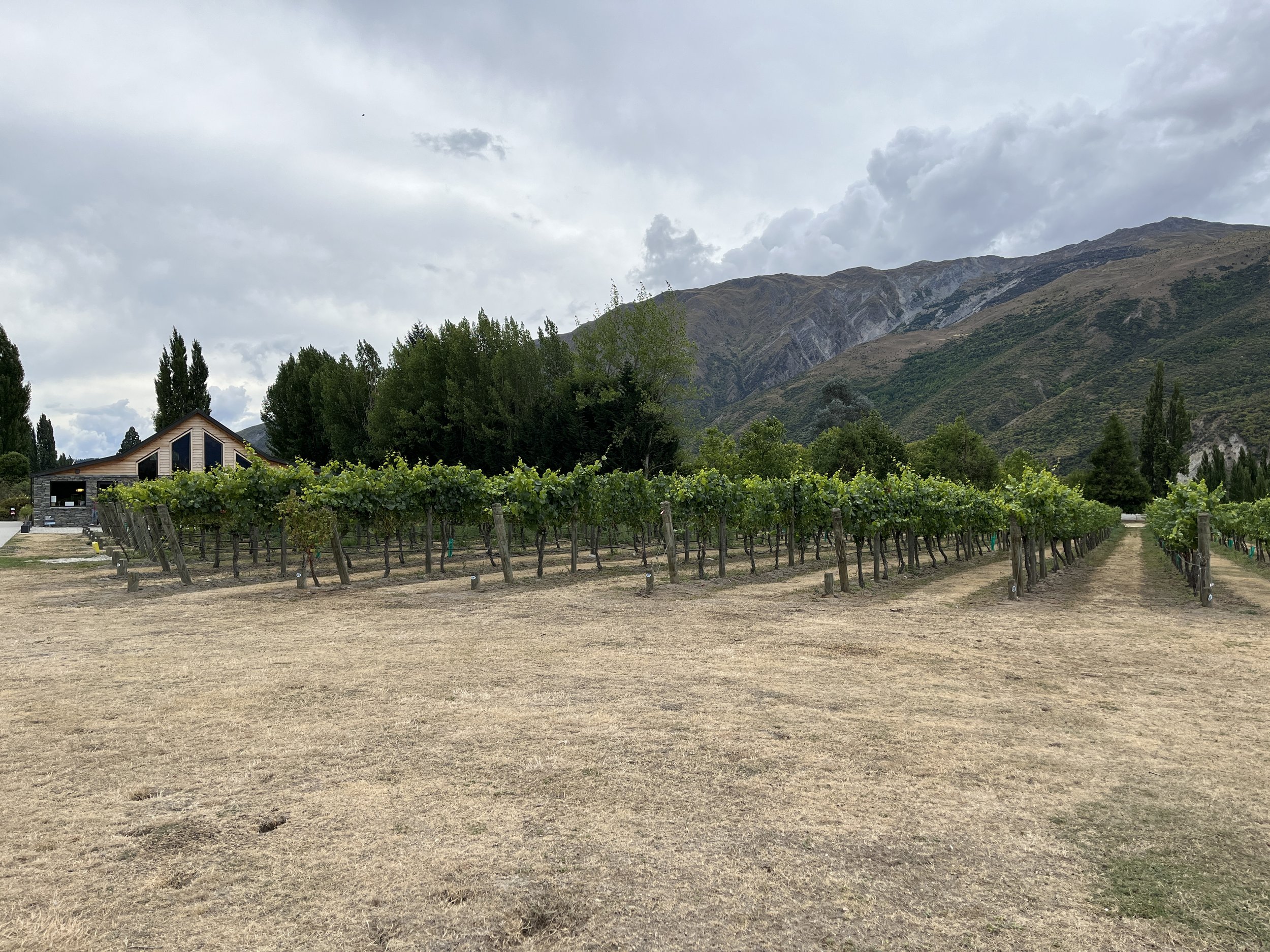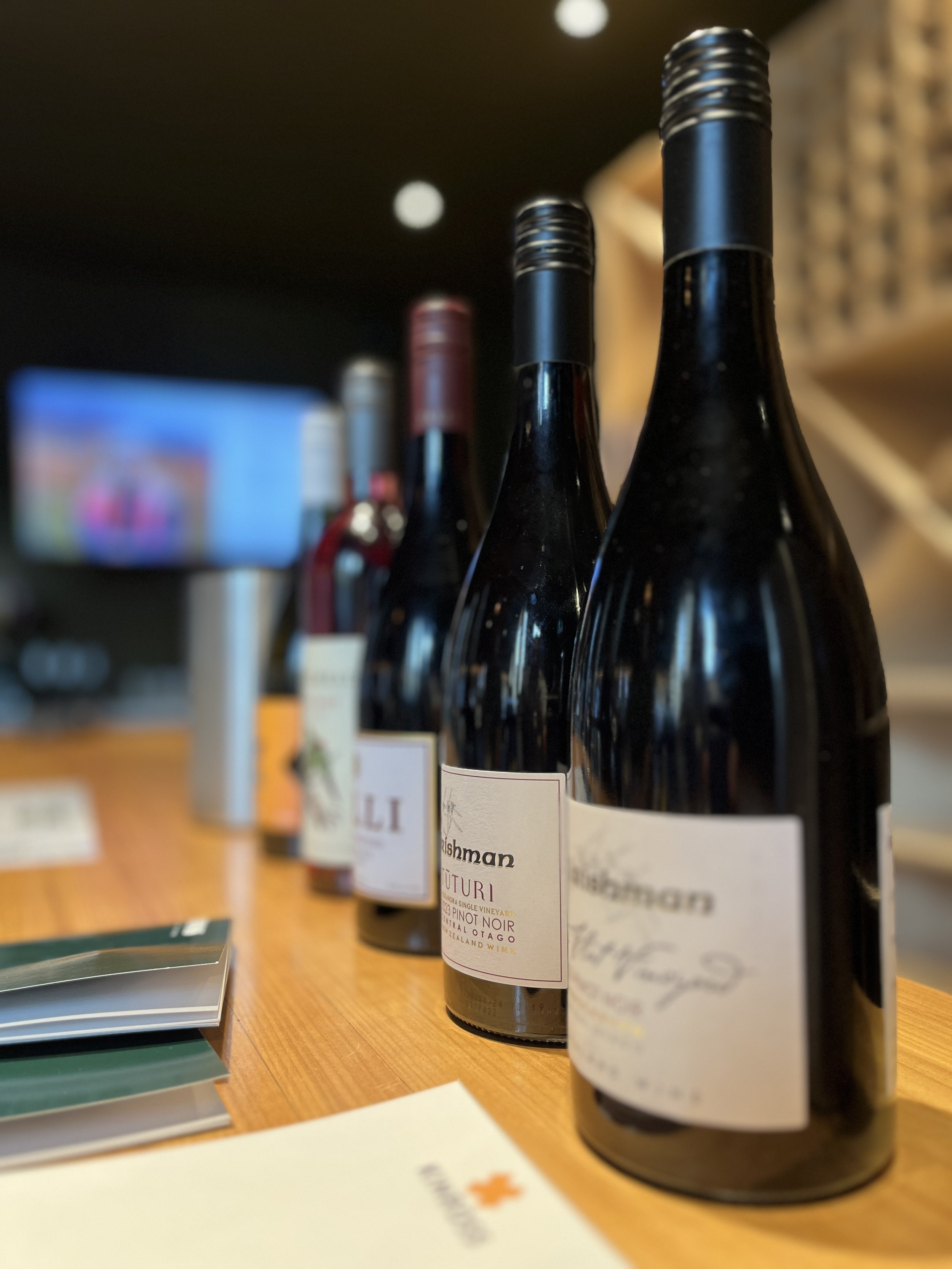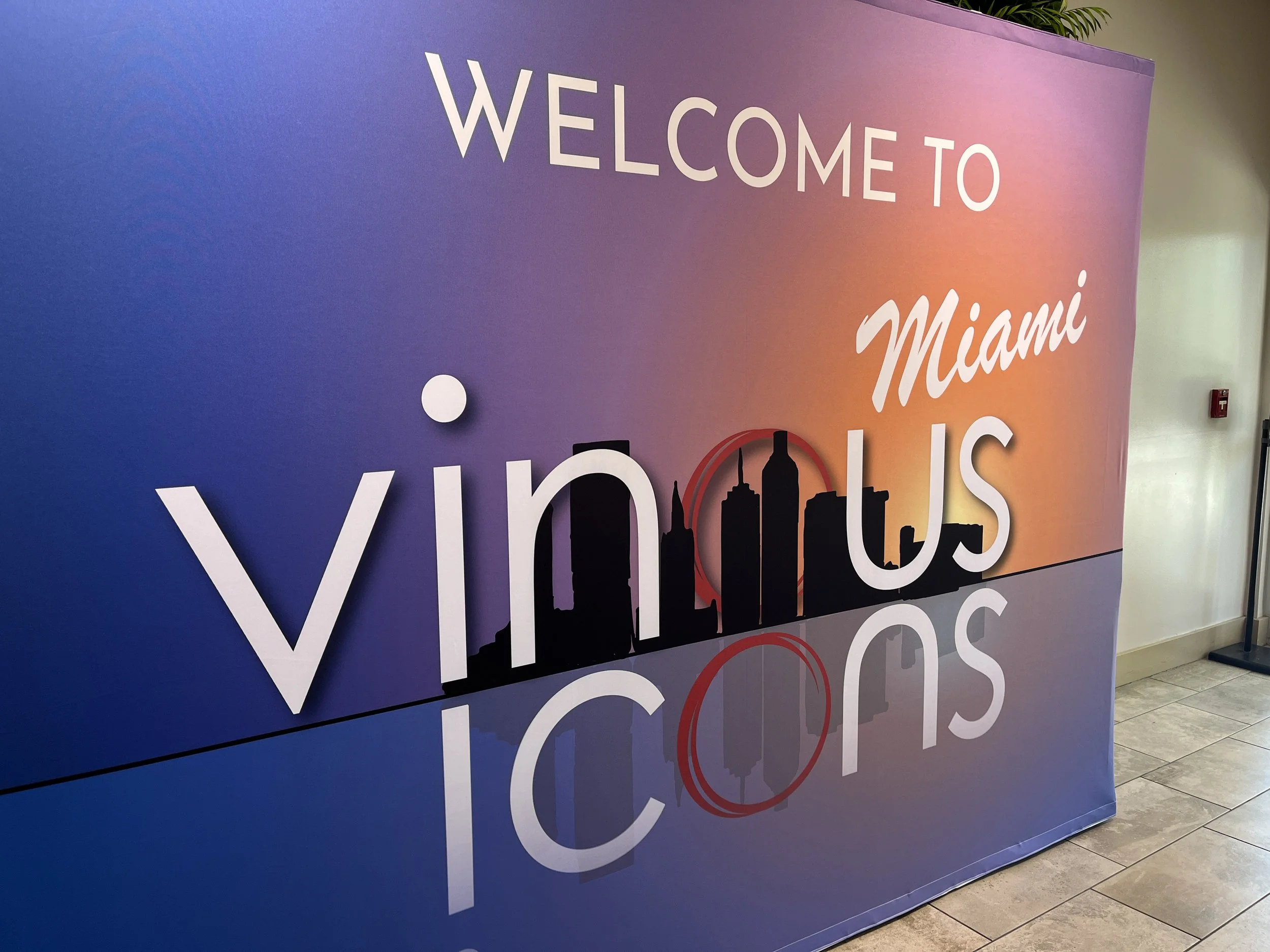Prosperous Extemporizations in Vines While Soaring on Long White Clouds - New Zealand Wine Trip
MEET ME IN OUTER SPACE
Every time I tell someone I went to New Zealand I get the question, “Why did you go all the way out there?”. My guy, why not? First and foremost can we all just agree, Lord of the effing Rings. Next, I mean, look at that fucking landscape man. It is out of this world! It was the type of thing that postcards can never do justice and the moment it takes your breath away you still don’t feel like it’s really happening to you.
The beauty of the landscape was not only its picturesque quality, but it was also it’s biodiversity. The volcanic soil, the diurnal shifts in temperature that are spellbinding even in the heart of summer, the fact that it’s on an island in the middle of God knows where lying perfectly between the precise parallels. It all allows for the majesty of grape growing to flourish. When you come to understand wine, you start to figure out how the beast does what it does. The terroir must fit the bill, but even then, you can know how the sausage is made and still be astonished by the product. The scope of land that allows for the fruitful bounty of the Vitis Vinifera on the islands of the Māori really is a spectacle that needs to be seen in person.
I wasn’t ready though. You would think after 20 hours of travel and going halfway across the world I’d be prepared by the time I got there. Don’t bet on it. The only thing I knew was I was open to whatever experience was ahead of us. I had a basic outline of wineries and regions that I knew we were going to, but outside of that I was very much open to having the trip guide me to what ultimately would be the best way to experience the New Zealand version of oeno-tourism.
First place you typically arrive at when you get there is the city of Auckland. It’s your “typical” “run-of-the-mill” major metropolis port town (note sarcasm), but the moment you leave the city limits is when the entirety of the experience begins to unfold. Driving through the ridgelines and winding roads you’re confronted with a sub-tropical forest intermingled with evergreens which leads right up to a coastline of vast openness. Run-of-the-mill, like I said, but in between all that there’s vineyards strewn about everywhere. Kind of makes you wonder, how serious is the rest of the world really taking wine from here? Because they clearly aren’t messing around with this kind of setup.
Since our openness was attuned to the almighty frequency of the universe of fortune, Lady Luck made, what would be the first of many, a kindness on our trip to reveal to us the fact that not too far from where we were staying was New Zealand’s oldest active winery still in production. Not originally part of the plan, but here’s to staying tapped in. So you know we had pop on in to see what all the fuss was about.
I’ve had Babich wines plenty in the past (I used to distribute it). It’s, indicative of its longevity, an established winery. Since Sauvignon Blanc accounts for something like 80% of the wine exported from New Zealand, that’s the wine I’d have from them before. That wasn’t to be the case this time. What blew my mind was their selection of other varietals. Setting the tone for the delightfully unexpected surprises these isles had in store for me during my time here. They had everything from Bordeaux and Rhone-style red blends from regions like Hawke’s Bay, and a world of whites from Marlborough. But to me, the Don Juan de la Nooch who ran smooth game on me was an Albariño which was just a jolting representation of the grape in all its glory. I wasn’t ready to get knocked down on my ass this hard at the first place. (can you see a theme developing here?)
I NEED YOU TO SEE THIS PLACE, IT MIGHT BE THE ONLY WAY
Back to Auckland and a short ferry ride away I found myself on a small island in a bay. The best way I could describe it was like stepping into an Oceania paradise covered in vineyards. A wine lovers haven with a tropical hideaway vibe. This is Waiheke Island… take me away! Fresh off the boat like a true Caribbeaner I was ready for a drink, so I didn’t hesitate to fill my cup. We went directly to one of the islands more luxurious operation, Tantalus Estate. Talk about keeping it classy San Diego. Situated on a 20-acre property in Onetangi Valley, the tasting room (which, for authenticity purposes, will furthermore be referred to as “cellar door” cause that’s how they refer to them in NZ) is reminiscent of a Tuscan villa surrounded by vineyards, olive and macadamia groves, and beehives. This winery specializes in traditional winemaking techniques combined with state-of-the-art innovations producing age-worthy wines which reflect the unique environment of the island. This is apparent with their selection of estate reserve and library releases which are the epitome of old-world style with new world flare.
We made a couple of more stops, but a real treat I gotta share was stopping into the boutique, family-owned vineyards of Te Motu Vineyard. Being one of the island’s oldest family-run estates they really figured out how to make the best of a good time with wine. They combine a winery production specializing in Bordeaux-esque red blends with an award-winning restaurant offering farm-to-table cuisine in a rustic, open-air setting. This results in an unpretentious experience with the touch of pompous refinement… like finger licking a white glove. A must try is the vertical tasting of their flagship offering “Te Motu” (which translates to “the Island” reflecting the geographical identity of the estate and its connection to the land and history of the region). This wine is a Cab Sauv-dominated blend, hand-harvested and aged at least 5 years before release. It’s a bold punch in the mouth red which demonstrates elegance while remaining drinkable and lush even after years in the bottle. We should’ve played the lottery that day we went because the Lucky Lady was back. They happened to just have opened a 2000 vintage which they poured us alongside the ’09, ’10, & ’20. Stairway to heaven under the island sun.
The last spot on Waiheke I’ll spread some love to was one of those places which, on paper, sound cool, but the moment you’re there in person you really can’t help to be mesmerized by its spectacle. Just steps away from the ocean-lapped shoreline of the Man o’ War Bay on the island’s eastern edge sits the seaside cellar door of the aptly named winery by the same moniker, Man o’ War Vineyards. This spot is a Sunday brunch white-girl wonderland! Lawn games, lounge chairs, wrap-around porch seating, and an outdoor wet bar... oh my! Calm down, Becky! This place is pouring some serious juice regardless of its “Rosé All-Day” feel. Speaking of rosés, their selection slaps! (sorry, too much time around the woohoo women.) Regardless, they produce a stunning Provence-style rose, whimsically named Pinque, made from Merlot, Malbec, Syrah and Cab Franc. It’s a fruit bomb cornucopia of popping flavors with a tart and round backbone which evokes visions of dump-truck derrières you can see from the front through tearful jubilation. Did I fall in love with this summertime stunner? Maybe… but trust me, if you witnessed it like I did you wouldn’t blame me if I did.
IT'S BETTER THAN I EVER KNEW
Once we left the island, we headed to the South Island. My only recourse for remorse on this trip is that I didn’t make it to more places. An obvious choice would’ve been Marlborough, the capital of the revolutionary Sauv Blanc expression which has made New Zealand wine a world-wide known phenom. But outside of that, regions like Hawke’s Bay, Gisborne, and Wairarapa on the North Island or Nelson and Canterbury on the South Island are all worthy suitors for those seeking out fine wine from Aotearoa (or “The Land of the Long White Cloud”). With that said though, we made the understandable decision to explore the wine wonders of the Central Otago region. A place that is steadily becoming know as a prominent destination for premium Pinot Noir. To my recurring revelation though, it was so much more than just pinot. Obviously!
Our homebase was the Gibbston Valley, but this didn’t mean we weren’t going to hit the road like Marvin and Tammi. No Mountain to high, no valley to low and no river wide enough to keep me from tasting wines from all over the region, and we had to traverse all of that to get around. What a wild landscape. Polar opposite from the tropical wonderland we’d just left. This was a true high-altitude, continental climate type environment. The days were hot, the nights were cold. The winemaking subregions were in valley pockets carved out by glacial river runoff. So where to first, Wanaka. Specifically, Rippon Winery.
There are wineries that can be described as beautiful and then there is what we got ourselves into on the hillside slope rolling off in the distance like something mythical into the shores of Roys Bay of Lake Wānaka. Stunning panoramic vistas showoff the lake and surrounding mountain range while in the middle of it all, like a perfectly curated art installation, sits a dazzling display of world-class winemaking. But don’t get stuck on its outer beauty only, cause its allure is skin-deep. They’ve been cultivating these lands for over a century to create some of the best single-vineyard varietal wines which are celebrated, not only for their quality and “sense of place”, but also for its dedication to sustainable practices and biodynamic viticulture. Producing all sorts of wines from Pinot Noir, Gewürztraminer, and even an Osteiner, but I was here to try their infamous Gamay.
Not like we haven’t already been knee-deep into one, but gather around children cause its Storytime. Let’s take it back to the 1970’s when founder Rolfe Mills planted several grape varieties, one of them being what he believed to be a Gamay cutting. Throughout the years, their Gamay wine received huge praise, most notably because of its quality of elegance and age-worthy nature. Fast forward to June of 2024 when DNA analysis revealed that these grapes were in fact not Gamay but a previously unidentified clone of Pinot Noir. Not that shocking considering Pinot and Gamay are practically siblings from their time spent together over the years in Burgundy, but this sent shockwaves around the Central Otago community. Several wineries throughout the years had taken cuttings from Rippon’s Gamay to begin their own productions of this delectable delight. Unfortunately, after the 2022 vintage, Rippon will no longer be labeling this wine as Gamay, but by its proper varietal identification, which makes this vintage a sought-after item for wine collectors. Guess who got their hands one?
The attendant joked how they were contemplating renaming it “Ginot” moving forward as an homage to this wine’s slanderous past, but all I could think was “Gimme”. What a glamorous lil’ saunter this salacious sauce and I had! In my mind I knew it was a pinot but there was sometime taboo and decadent about the wine that made me feel like it was slightly sinning… but like in that good way when you demurely gasconade to your gossip circle once you’ve had a few too many. If this was how things were starting in the southlands than I don’t know what I’m going to do with myself. Just call me Scarlett cause frankly, my dear, I don’t give a damn where things go from here.
HOW DO YOU DO IT? MAKE ME FEEL LIKE I DO
Next up on our “reccy” are Bannockburn and the Cromwell Basin. Fed by the Clutha River and a runoff of the Kuwarau River, these are some of the warmer subregions of Central Otago so that means the wines are gonna get bigger and bolder like juicers on muscle beach! Down the famed Felton Road we decided to go off the beaten path to a hidden hotspot with a cellar door of repurposed shipping containers for an intimate tasting. Te Kano Estate is a family-owned vineyard, which seems to be the norm in New Zealand. No corporate conglomerates over-round-here partner. “Te kano” which translates to “the seed” in Māori symbolizes the vineyard’s commitment to nurturing the land to fulfill its potential. I was definitely full-filling myself cause I couldn’t get enough of their selections. We went through the whole portfolio. The Pinot Gris twiddled at the cords of my heart strings. Their Pinots keyed out a soulful baseline like an organ of a 60’s psychedelic rock band. But they all were simply the back-up performers to the headlining main attraction, the Cabernet Franc.
I might as well have crawled into the hearth itself to simmer up the jam of macerated tart dark berries which were coalescing on my taste buds the moment this ambrosia graced my palate causing flavors to ignite on impact. The beauty of an astonishing Cab Franc is that, even with the intensity of heavy fruit which bombard the senses upfront, it’s the acidic structure and tannic finish which come through on the backside to evoke your senses to yearn for another assault. This wine was the antithesis of a peacemaker, but sometimes you need someone like that on your side.
No journey to the Otagos (no clue if that’s even a thing but I’m going with it because it felt right to say it) is complete without venturing through the Gibbston Valley. You can throw a paper plane off one of its rolling hills, let the winds carry it off in any direction and you’re chances of landing on a phenomenal winery are high. In that vein, we rolled the dice and popped into Kinross Winery & Bistro for our last whistle wetting and rub-a-dub grub grab (i.e. a much-needed meal), but what we found was nothing short of serendipitous. When you walk through their doors, they make their message clear: One cellar door, Five exceptional wineries, Destination Wine. Like a broken record, I should’ve known. The five wineries they showcase are Kinross, Hawkshead Wine, High Garden, Valli Wine, and Wild Irishman Wines. It’s the latter of these offerings which I’ll be offering my admiration to.
It was Aristotle that said, “Learning is an ornament in prosperity, a refuge in adversity, and a provision in old age.” Maybe it makes sense then that a life lived being a pioneer in planting experimental grapevines in a region, opening the first commercial winery within said region, walking away from it all to only make your way back to it by doing it all over again with a whole new winery, being a founding member of the Central Otago Winegrowers association, and being recognized as a Fellow of New Zealand Wine might mean you’ve learned a thing or two about quality winemaking. That’s why Alan Brady makes a hell of a good wine, particularly a wine from the Gibbston Valley, and more specifically, a Pinot Noir. Leave it him to come back a third time to winemaking and absolutely crushing it with the Wild Irishman selections.
Producing limited quantity, single vineyard wines with minimal intervention techniques has been a life’s mission for Brady. His precision is wildly on point with these offerings. My fondest connection to one of his endeavors was the Tūturi Pinot Noir from Alexandra. Another subregion of the Central Otago, it has several notches on its belt when it comes to viticulture. Most notably, it is considered the driest and most extreme subregion in New Zealand and one of the most southern wine growing regions in the world. These conditions allow it to produce complex, intense, and concentrated Pinot Noir grapes with a spice-driven approach. This was the precise comet which cratered itself into my face as I took my last sip of New Zealand cork punch. Only fitting that it left me with more questions than answers after all my time at the bottom of glasses these last few days.
YOU ARE STELLAR
I never doubted I was going to enjoy my time in New Zealand, but it was the abundance of redefining moments which took me for the head spinning ride that it did. A classic case of it not being about the destination but the travels along the way that define the beauty of the trip. I couldn’t have asked for anything more from my time in the Land of Kiwis… (well, maybe I could’ve actually seen a kiwi bird while I was there, but that’s a whole other conversation).
If you have the time and you want to open yourself up to infinite discovery that only the nectar of the vine can provide you, then put New Zealand at the top of your list for destinations to explore. It’s not just Sauv Blanc, rugby and hakas, it’s an unraveling koru before your very eyes. Constantly opening itself up to you if you allow yourself to tap into that frame of mind and state of being. I just hope you’re prepared for what it has instore for you. By the end of my time there, I was finally ready. Kia ora.


